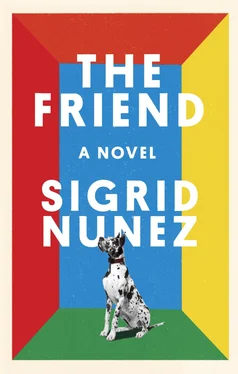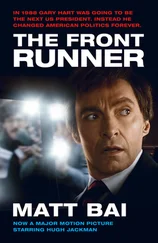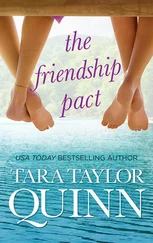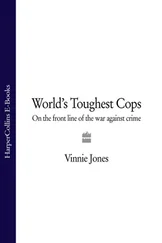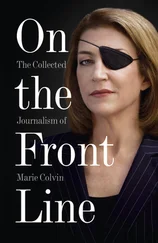(But a woman writer has a double dose, said Edna O’Brien: the masochism of the woman and that of the artist.)
• • •
The invitation was to teach a writing workshop at a treatment center for victims of human trafficking. The person who asked was someone I knew, or rather, used to know: we had been friends in college. Back then she, too, wanted to be a writer. Instead she became a psychologist. For the past ten years she’d been working at the treatment center, which was connected to a large psychiatric hospital a short bus ride from Manhattan. The women she worked with had responded well to art therapy (I would later see some of their drawings and find them highly disturbing). She thought writing might be even more helpful, as it appeared to have been very helpful to other trauma victims, such as war veterans with PTSD.
I wanted to do it. As a community service, as a favor to an old friend, and as a writer.
I thought of the baroquely pierced and tattooed young woman I’d met some months earlier, in a workshop I’d taught at a summer writers’ conference. It was a fiction workshop, though what she was writing was closer to memoir—call it autofiction, self-fiction, reality fiction, whatever—the first-person story of Larette, a sex-trafficked girl.
Her writing was good for three main reasons: a lack of sentimentality, a lack of self-pity, and a sense of humor. (If the last sounds unlikely, try to think of a good book that, no matter how dark the subject, does not include something comic. It’s because a person has a sense of humor that we feel we can trust them, says Milan Kundera.) One of those life histories that had to be toned down to avoid straining belief. (Readers would be amazed how often writers do this.) She had spent two years in a residential recovery home, fighting drug addiction, shame, and the temptation to flee back to her pimp, whose name was tattooed in three different places on her body. Later, she enrolled in a community college, where she took her first writing course.
Like many people I’ve met, she believes that writing saved her life.
About writing as self-help you were always skeptical. You liked quoting Flannery O’Connor: Only those with a gift should be writing for public consumption.
But how rare to meet a person who thinks what they’re writing is meant to stay private. And how common to meet one who thinks what they’re writing entitles them not just to public consumption but to fame.
You thought people were on the wrong track. You thought that what they were searching for—self-expression, community, connection—would more likely be found elsewhere. Collective singing and dancing. Quilting bees. That’s where people would have turned in the past, you said. Writing was too hard! Not for nothing did Henry James say anyone who wants to be a writer must inscribe on his banner the one word loneliness . Frustration and humiliation, Philip Roth said writing was. He compared it to baseball: You fail two-thirds of the time .
That was the reality, you said. But in our graphomaniac age, the reality had gotten lost. Now everyone writes just like everyone poops, and at the word gift many want to reach for a gun. The rise of self-publishing was a catastrophe, you said. It was the death of literature. Which meant the death of culture. And Garrison Keillor was right, you said: When everyone’s a writer, no one is. (Though, in fact, this was exactly the kind of statement you used to warn us to be on guard against: sounds good, but if you press on it, it falls apart.)
None of this was as new as it might sound.
To write and have something published is less and less something special. Why not me, too? everyone asks.
Wrote French critic Sainte-Beuve.
In 1839.
Not that you discouraged me from teaching at the VOT center. I imagine it could be very depressing, you said, but it won’t be uninteresting.
In fact, it was your idea that I should write about it.
• • •
The women at the center were encouraged to keep journals. Or, as my friend the psychologist put it, to journal. The journals were meant to be private, she said. Some of the women had been alarmed by the thought that someone might read what they’d written, and she’d had to assure them this wouldn’t happen. They could write whatever they wished, with perfect freedom, knowing no one else would read it. Not even she would read it.
She suggested that those for whom English was a second language write in their native tongue.
Some women were careful to hide their journals when they weren’t using them. Others carried their journals always with them. But a few insisted on destroying whatever they’d written immediately or soon after they’d written it. And that was fine, too, she told them.
The women were asked to write every day for at least fifteen minutes, quickly, not stopping to ponder too long or let themselves be distracted. They wrote in longhand, in notebooks provided by the center (my friend believes in studies that show longhand is better for concentration and that a lined page is more welcoming than a blank screen for receiving intimacies and secrets).
Of course, there were some who refused to journal.
The same women who get angry with me for expecting them to revisit bad experiences, she said. You have to understand what these women have been through. For most of them the abuse didn’t begin with the trafficking. ( I must have experienced violence from birth .) Some were deliberately put in harm’s way—in some cases out-and-out sold—by members of their own family. And just because they’re not being abused anymore doesn’t mean they’re not still hurting. At some point I always ask them what they think would be the best thing that could happen to them, and I can’t tell you how many say, I think the best thing for me would be to die.
But there was a group of women who took happily to journaling, often writing for much longer than fifteen minutes a day. My friend wanted to give these women a chance to be in a workshop, a safe place where they could not only write but share their writing with one another and an instructor. Among those who’d signed up, she said, I could count on a certain level of English, though not every one was a native speaker. Even the native speakers, however, had expressed worries about their writing ability and were particularly concerned about spelling and grammar. She had told the women that, as in their journals, they should pay no attention to spelling and grammar.
So it’s important that you ignore those errors, she told me. I know that won’t be easy for you, but these women have enough problems with self-esteem, and we don’t want to inhibit them.
I thought of a poem by Adrienne Rich that includes lines written by a student in the open admissions program in the City College of New York. People suffer highly in poverty. . . . Some of the suffering are:
My friend showed me examples of the artwork the women had done: headless bodies, houses in flames, men with the mouths of ferocious animals, naked children stabbed in the genitals or through the heart.
She had me listen to tapes of testimony some of the women had given, and the drawings came alive.
I keep calling them women, she said. But we see many who are still girls. And those are some of the most tragic cases. We have a fourteen-year-old who was rescued last month from a house where she’d been kept chained to a cot in the basement. When the sexual abuse is compounded by captivity—that’s when the damage is most severe. At the moment this girl is unable to speak. There’s nothing wrong with her vocal organs—not that doctors can find, anyway—but she insists on remaining mute. We see this kind of psychosomatic symptom from time to time: mutism, blindness, paralysis.
Читать дальше
